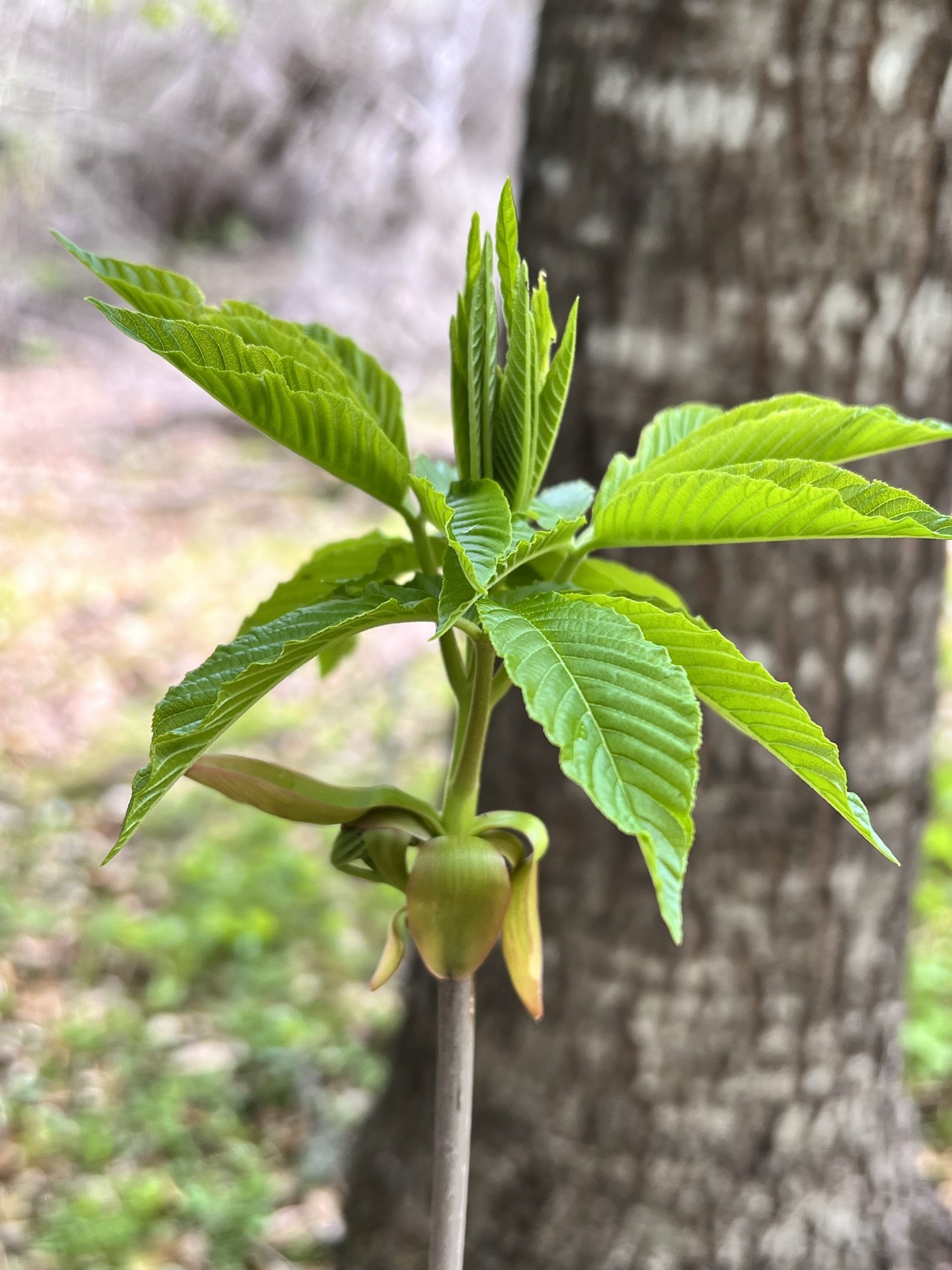Native Plant of the Month: California Buckeye
California Buckeye (Aesculus californica)
As heavy rains and cold winds batter the Bay Area, it seems like the perfect occasion to hide indoors and snuggle in a warm blanket. But for the California buckeye (Aesculus californica), there’s no time to waste.
Let’s explore the seasons to see how this native tree has evolved with California’s unique climate of wet winters and dry summers.
Winter
Despite the cold winds and short days, buckeyes know they need to start growing to take advantage of the precious precipitation.
Buckeye seeds that fell in fall now split apart, sending thick taproots into the rain-softened soil. Buds on buckeye branches also break open, pushing out young leaves to absorb a few rays of winter sunlight.
Spring
In California, spring offers a limited window when ample sunshine and moisture – the two most important factors for plant growth – coincide.
Buckeye leaves stretch out like fingers to catch the sun, fueling a bloom of fragrant, white flowers that pollinators love.
Summer
Just as the heat intensifies, the rain stops.
Some trees tough it out by growing thick, leathery leaves. But the buckeye simply lets its leaves wither and fall.
This dormant state reduces evaporation and helps the tree retain water.
Fall
Buckeye fruits hang from bare branches like ornaments.
These grow and swell until the smooth brown seeds burst out from their leathery capsules and fall to the ground, awaiting the return of the rain.
Growing Buckeye at Home
Each year, California buckeyes follow this pattern of growth, reproduction, and dormancy. This has allowed them to grow in a variety of habitats, ranging from partly shaded streamside forests to sunny, grassy slopes.
Once established, they need little to no supplemental irrigation, and they reach about 15 to 40 feet in height at maturity.
All parts of the buckeye, including the leaves and fruits, are toxic to humans and other animals when ingested. Native tribes across California traditionally use the seeds to poison and catch fish, or thoroughly leach out the toxins and cook them for food.
Note: Never consume buckeye fruits if you do not know how to properly process them.
Where to Find Buckeyes
Our nursery grows native plants including buckeyes using seeds and cuttings carefully sourced from local watersheds.
See our latest inventory for online sales here:
By Stanley Gu, Ecologist







